Opportunity.
Powered by choice.
The Android operating system is completely open source. That means anybody—even Android competitors—can choose to download, install, modify, and distribute its source code for free of charge. The result? More people have access to the power of mobile technology than ever before.
Building a platform that’s open to everyone
Let’s go back 10 years to 2006. NASA just launched the New Horizons probe to Pluto, The Da Vinci Code recently opened, and only 1% of the world had a smartphoneBusiness Insider, IDC - One In Every 5 People In The World Own A Smartphone, One In Every 17 Own A Tablet - December 2013.
While the first smartphones were impressive for their time, they were very expensive. Device makers had to pay a fee to license an operating system (OS), or they had to absorb the cost of developing their own from the ground up. Furthermore, most operating systems were closed to third-party developers and manufacturers. In other words, smartphones weren’t for everyone.
So, in 2007, Google joined forces with the mobile industry to form the Open Handset Alliance (OHA). The mission was to establish Android as an open-source OS. This meant anybody could access, download, and modify Android’s source code for free of charge to help develop apps, mobile devices, or even a competing OS.
The benefits were immediate. Companies could customize Android to build unique experiences for their customers. App developers were given access to a global audience. And perhaps most impactful, device makers could install Android on their devices for free of charge, without licensing or developing a proprietary OS.
This enabled manufacturers to cut development costs, which helped drive down the price of smartphones around the world. Between 2011 and 2013, average smartphone prices fell 25% worldwideBCG - The Growth of the Global Mobile Internet Economy (PDF) - February 2015 (page 7). As this trend continues, we’ll get closer to a world where affordable mobile technology can bring the world’s information to anybody who wants to learn, grow, and succeed.
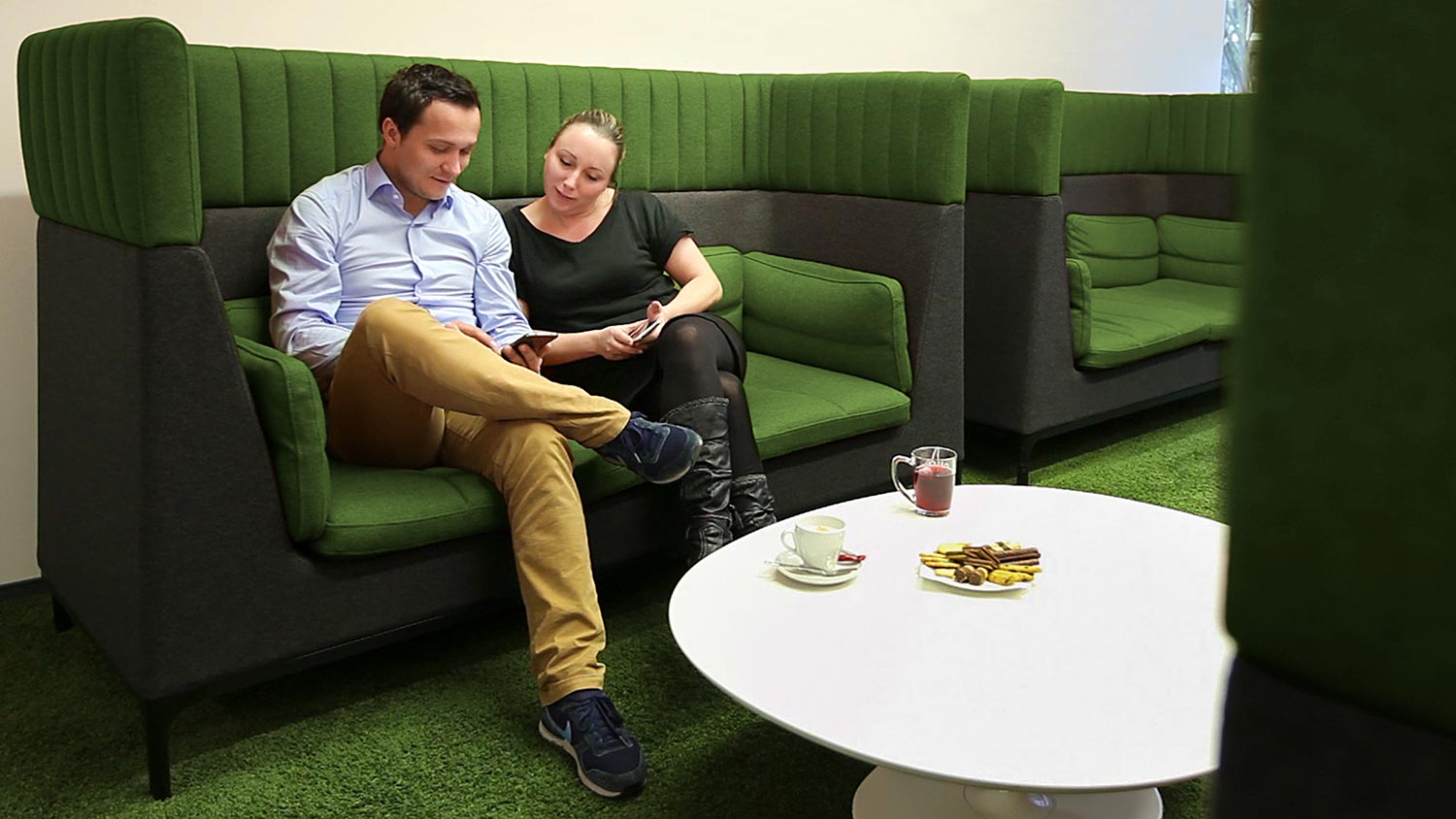
Gigaset, a German hardware manufacturer, launched their first Android smartphone in September 2015. With the help of Android, they were able to reduce production costs by 30%.
Driving affordability across the globe
By providing a free of charge and open OS, Android has helped proliferate affordable mobile devices around the world. In 2015, the average Android device cost $208. That’s in stark contrast to phones on closed platforms, which can average as high as $651KPCB - Internet Trends - June 2016 (Page 12). In India and Africa, Google has partnered with local manufacturers to provide high-quality smartphones for less than $100. And recently the Fero i401 became available in Nigeria for less than $60Smartphonetobuy.com - Cheap Android Phones Under 15000 Naira In Nigeria.
Thanks to devices like this, people across the globe have access to new opportunities — whether it’s starting a business, sharing a video with the world, or gaining an education for themselves or their children. None of this would be possible if every smartphone came with a $600 price tag.
It’s for this very reason that Android runs on most smartphones in IndiaStatista - Market share held by mobile operating systems in India from January 2012 to July 2015 - 2016 and AfricaIDC - Middle East and Africa Smartphone Market to Top 155 Million Units in 2015 as Sub-$200 Segment Surges - July 2015. Not for a lack of choices, and not because competitors have been forced out, but because Android is the most affordable option for much of the world’s population.
The bottom line is that everyone deserves the same opportunities. People in Lagos deserve the same access to information as people in Los Angeles. People in Penang want to succeed just as much as people in Paris. And soon, there will be a smartphone—a gateway to the world’s information—for anybody with $10 and an ounce of curiosity.

Google partnered with local manufacturers to sell Android smartphones for under $100GSMA - Global Mobile Economy Report - 2015 (page 15) in countries like Nigeria, Indonesia, and the Philippines.
There are seven billion people in the world. And I think phones are the first time most people will have access to a modern computing device. With Android, we want to enable that for people.Sundar Pichai, CEO, Google
$651
Average price of a smartphone on some closed platformsKPCB - Internet Trends 2016 - June 2016 (Page 12)
$208
Average price of a smartphone using Android’s open-source OSKPCB - Internet Trends 2016 - June 2016 (Page 12)

Encouraging competition creates a stronger mobile ecosystem
Competition and innovation are fundamental to a mobile ecosystem that provides greater access to technology. The fact that Android’s source code is open helps foster such an environment. Anyone can use Android to create apps and develop competing software without paying a fee or entering any agreement with Google.
For example, look at Amazon Fire OS, which powers the Fire phone and was built using the Android platform. Free of charge licensing fees or the cost of creating a proprietary OS, manufacturers both large and small are in a much more viable position to compete.
Furthermore, device makers and mobile operators are never forced to pre-install Google’s suite of apps on their devices. Even when the Google suite does come pre-installed, third-party apps thrive on Android. For example, in high-growth markets like India, 98% of people surveyed use Facebook’s WhatsApp at least once a month for messaging, while only 32% use Google HangoutsEricsson ConsumerLab - Communication in the world of apps - June 2015. In fact, of the 1 billion+ people who use WhatsApp, 730 million are on Android devicesVentureBeat - Three-quarters of WhatsApp users are on Android, 22%% on iOS (study) - August 2015.
No manufacturer is required to pre-install any Google app on any Android device. Ever.
What’s more, not all Android-based phones come with the Google Play Store installed. That’s because Android is the only major mobile OS to enable multiple global and regional app stores, including stores owned by Samsung, Lenovo, Orange and TIM (Telecom Italia)Business of Apps - The Ultimate App Store List. By contrast, closed platforms typically have one app store - their own.

See how Android assisted developers in creating and distributing Lazzus, a smartphone app that helps the visually impaired navigate their surroundings.
Even app pricing has changed on Android to encourage competition. To accommodate the rising popularity of Android devices around the world, the Google Play Store made apps more affordable and accessible in 2015 by lowering minimum pricing limits below the standard $0.99. This helps developers distribute apps in markets where $0.99 may be flat-out unaffordable to most consumers.
By opening up the mobile industry to more competition, Android has enabled a diversity of devices and apps that reflects the billions of people who might use them—whether they are in the market for a premium upgrade, or looking for their first ever connection to the Internet.
Even with Google apps pre-installed, many third-party apps thrive on Android
-
 1B+installs on AndroidGoogle Play - WhatsApp Product Page
1B+installs on AndroidGoogle Play - WhatsApp Product Page -
 1B+installs on AndroidGoogle Play - Facebook Product Page
1B+installs on AndroidGoogle Play - Facebook Product Page -
 500M+installs on AndroidGoogle Play - Dropbox Product Page
500M+installs on AndroidGoogle Play - Dropbox Product Page -
 100M+installs on AndroidGoogle Play - Spotify Product Page
100M+installs on AndroidGoogle Play - Spotify Product Page

Zound Industries was able to develop and manufacture a specialized Android device without the added costs of licensing an operating system, or developing its own.
More choice for consumers
More devices
If you spent just one minute looking at every available Android device, it would take you 2.5 weeks to go through them all. Without sleeping. That’s more than 24,000 devices made by nearly 1,300 different brandsOpenSignal - Android Fragmentation Visualized - August 2015. Android has even helped create a new segment of smartphones—priced between $100 and $500How to Geek - Why You Don’t Need an Expensive Smartphone Anymore - September 2014—that previously didn’t exist. To look at it another way, there’s an Android device for every preference, budget, and personality.
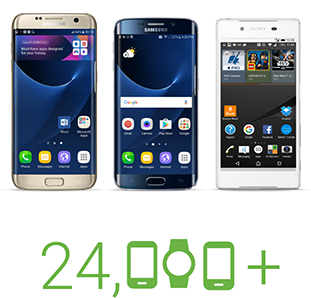
More apps
Android’s unprecedented offering doesn’t end with devices. There are over 1M apps available on the Google Play Store alone. And with such a diverse range of apps comes a whole new world of experiences.
Say you want to learn a language. The Play Store offers 270 language-learning apps, and over 70% are free of charge to download. There are apps for buying and selling, reading and writing, finding jobs, hiring employees, and even learning to play piano like a virtuoso. Whatever you want to explore, you can do it on Android.

More custom experiences
Each Android device delivers its own experience right out of the box, depending on which apps come pre-installed. Pre-installed apps might even consist entirely of non-Google apps. Why? Because manufacturers decide which apps to deliver to their users. Many choose apps from companies like Facebook, Microsoft, and Opera Software, which compete directly with Google.
But say a device does come with Google apps pre-installed. The beauty of Android is that even for basic device functions like calling, texting, or organizing photos, users are never required to use Google software over third-party apps they prefer. Any pre-installed app can be easily disabled, removed from the homescreen, and replaced with another—for example, replacing Google Search with another search engine.
What it all means is that unlike most closed operating systems, Android puts the user in charge. So whether you like customizing your device, or you simply believe in technology that’s transparent and open, Android is for you.
Android users can completely customize their homescreens and deactivate pre-installed apps
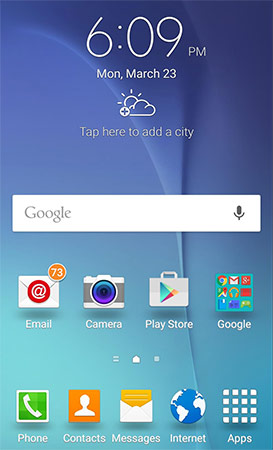
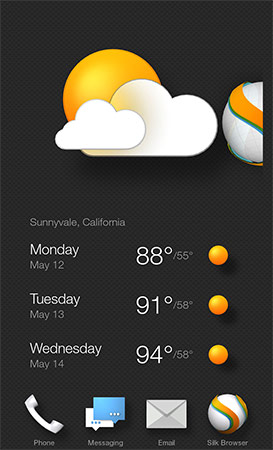
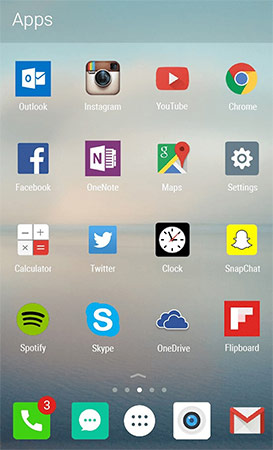
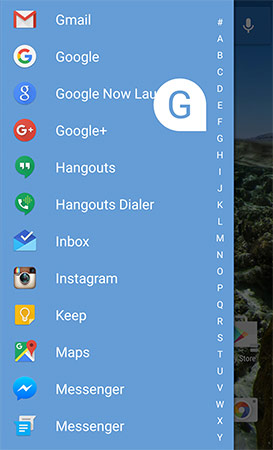
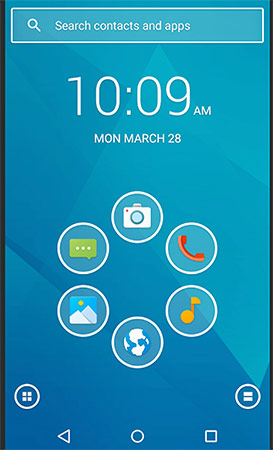

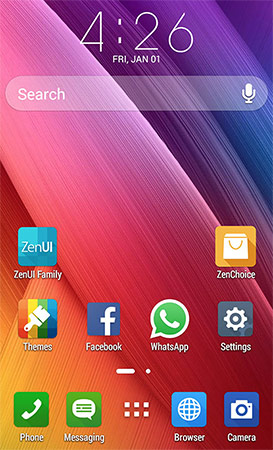
Helping developers reach a global audience
Beyond the people who use Android phones, and the manufacturers who build them, there’s a crucial third force in the Android ecosystem: The developers who build the apps people love.
It hasn’t always been easy 对于开发人员. Not long ago, they had to spend valuable resources to create experiences for a multitude of platforms such as Symbian, Web OS, and S60. As a result, reaching a wide audience was just too costly for most development studios.
So we aligned standards around an open-source platform and created an operating system that leveled the playing field for all developers. Consider Android’s intent system. Unlike comparable systems used on closed platforms, it encourages users to choose their default apps instead of forcing them to use first-party apps.

Star Chart praises Android’s open-source model for making it possible to develop its sky-mapping app. Today, over five million people download Star Chart every monthGoogle - Google Growth Engine (Star Chart Case Study).
The Play Store’s one-time registration fee for app developers is just $25. The next largest app store charges $99 per yearApple Developer Program - What You Need To Enroll.
And today, reaching Android’s global user base is easier than ever. With Google Play’s one-time registration fee, it costs developers just $25 to register, much less than the recurring $99 annual fee charged by our competitorsApple Developer Program - What You Need To Enroll. Plus, the Play Store review and approval process helps developers move quickly by asking simple, straightforward questions. For example, is your app secure? Is your developer account trustworthy? And does your app’s content meet our policy requirements? As a result, it takes just a few hours to approve apps on Google Play as opposed to several days on other app storesThe Verge - App Store 2.0 - June 2016.
With over 1 billion users accessing Google Play and a whole range of other app stores, no other platform does so much to help developers reach so many people. And it pays off. From February 2014 to February 2015, Google paid more than $7 billion to app developers for their Play Store app sales and associated in-app purchasesAndroid Developer’s Blog - A New Way to Promote Your App on Google Play - February 2015.
In short, we’re dedicated to empowering developers by giving them the tools they need to develop and distribute their apps. After all, they’re the ones delivering the remarkable experiences to Android users.

RogerVoice is a voice recognition app for the hearing impaired, which used material design and beta testing within Android to create an interface which is accessible and intuitive to navigate.
Choice and openness fuel economic growth
From expanding the market for apps, to driving down the cost of mobile devices, it’s impossible to ignore Android’s contribution to the mobile economy, which drives some 13 million jobsGSMA - Global Mobile Economy Report - 2015 (page 3) and $3 trillion of the world’s GDPGSMA - Global Mobile Economy Report - 2015 (page 2).
In Europe alone, the Android platform has generated over 1.2 million jobsPPI - App Economy Jobs In Europe - January 2016. The European Commission projected that by 2018, the entire apps sector will employ 4.8 million people and contribute €63 billion to the European economyEuropean Commission - The €63 billion app boom. Nearly 5 million jobs in European app sector by 2018, says EU report- February 2014.
1.2M
The Android platform alone has generated over 1.2 million European jobsPPI - App Economy Jobs In Europe - January 2016.
$3TR
Android is an important part of the mobile economy, which contributes over $3 trillion to global GDP across 236 countriesGSMA - Global Mobile Economy Report - 2015 (page 2).

And European apps are leading the field. In 2015, the top five most downloaded games across iOS and Android came from European studiosApp Annie - App Annie 2015 Retrospective - 2016 (page 40). Many of the world’s most recognized app developers are based in Europe, including Spotify and Soundcloud, as well as Rovio (Angry Birds), King (Candy Crush Saga), and BlaBlaCar. All are harnessing Android to boost their global success.
Android also enables manufacturers to grow and contribute to their local economies. For example, Madrid-based BQ, which credits much of its success to Android, was able to expand its staff to over 1,000 in under five years and today employs over 1,200 peopleGoogle - Google Growth Engine (BQ Case Study). And Wiko, a French manufacturer of Android devices, has become the second largest device maker in FranceThe Economist - The Rise of the Cheap Smartphone - April 2014. Companies like these are able to succeed because Android helps significantly lower development costs and other competitive barriers.
Of course, Android’s positive economic impact extends far beyond the EUEuropean Commission - The €63 billion app boom. Nearly 5 million jobs in European app sector by 2018, says EU report- February 2014. Whether Android is helping to create jobs within the app economy or helping device makers get off the ground, it all starts with the ability of developers, manufacturers, and competitors to freely use Android to its fullest potential.

Despite starting out during an economic recession with just ten entrepreneurs, BQ now employs more than 1,200 people, and credits much of its success to Android Google - Google Growth Engine (BQ Case Study).
Democratizing access to information around the world
Smartphones aren’t just phones. They’re a doorway to discovery, an ally for ambition, and a springboard for knowledge. Across the world, in areas where Internet access is less common, an entire generation is coming online for the first time through mobile devices. No longer a status symbol, smartphones are becoming available to everyone—empowering everyone.
That’s why Android has become a platform that any handset manufacturer can adopt, for which any developer can build, and on which any app can run. It’s also why Android is dedicated to remaining open, transparent, and accessible to developers and users around the world.
In many areas, mobile is the only way to get online.
95% of the world’s population is covered by a mobile cellular network, but only 10.8% of households worldwide have a fixed broadband subscriptionITC - ITC Facts and Figures 2015 - May 2015 (Page 2).
2.9B
Driven by increased affordability, the number of smartphones in the developing world will increase by 2.9 billion by 2020GSMA - Global Mobile Economy Report - 2015 (Page 2).


We can actually provide people with life-saving information. And with Android, I want to reach five million users across Africa in the next three years.Alain Nteff, Co-Founder and Developer, GiftedMom
Together, Conrad Tankou and Alain Nteff created GiftedMom, an app that provides life-saving information that helps prevent maternal and infant mortality in developing countries.
As Sir Tim Berners-Lee once famously said of the World Wide Web:
“This is for everyone.”
The same is true for Android.




